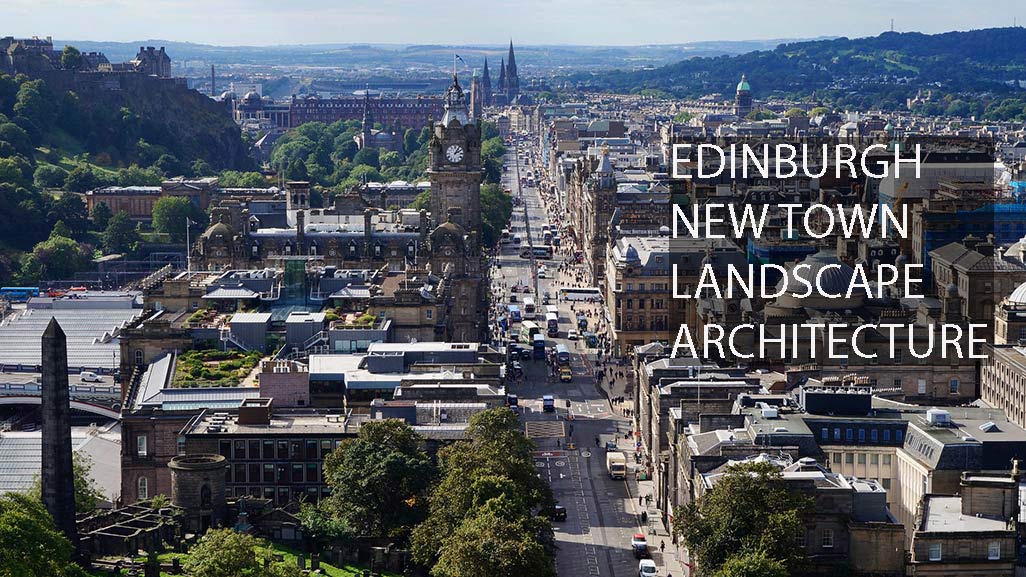The brilliant landscape architecture of Edinburgh New Town
Was Edinburgh’s new town planned by a landscape architect? Yes. One could argue that the term ‘landscape architect’ was not invented until 1828 and could not apply to a competition design submitted in 1766. But the term ‘architect’ did not exist when Egypt’s pyramids were built and was unknown in England when the Gothic cathedrals were built. Is anyone going to say these are not works of architecture? No.
The first phase of Edinburgh’s New Town, and the principles of its layout were the work of James Craig. He had been apprenticed to a stone mason who had helped build Adam’s Royal Exchange in Edinburgh’s High Street. But Craig was more influenced by his uncle, James Thomson, a famous landscape poet, who wrote The Seasons (and the words for “Rule, Britannia!”). Often, Thomson leads the reader on a scenic walk. After climbing a hill he likes to enjoy the view as he did in the Summer of 1726
And what a various prospect lies around!
Of hills, and vales, and woods, and lawns, and spires,
And towns betwixt, and gilded streams; till all
The stretching landskip into smoke decays.
This is the type of concept Craig applied to Edinburgh New Town. He was very concerned with prospects:
- north from George Street to the Firth of Forth and Fife
- south, from Princes Street to the Castle and the Old Town
- east and west along Princes Street to the Calton Hill and the the churches
- east and west along George Street to St Andrews Square and George Square
So we all enjoy views of hills, and vales, and woods, and lawns, and spires, and towns betwixt – and of the Firth of Forth. Craig therefore planned the street layout and the public open spaces. His work was a composition of landform, water, vegetation, planting and building. Within this framework, which we would now call a landscape urbanism framework, he left the work of designing the buildings to many architects. Edinburgh New Town is therefore an excellent illustration of how landscape architects should work with architects on residential architecture. Much of the New Town now has non-residential functions. This shows that the working relationship works equally well for other types of urban design.

